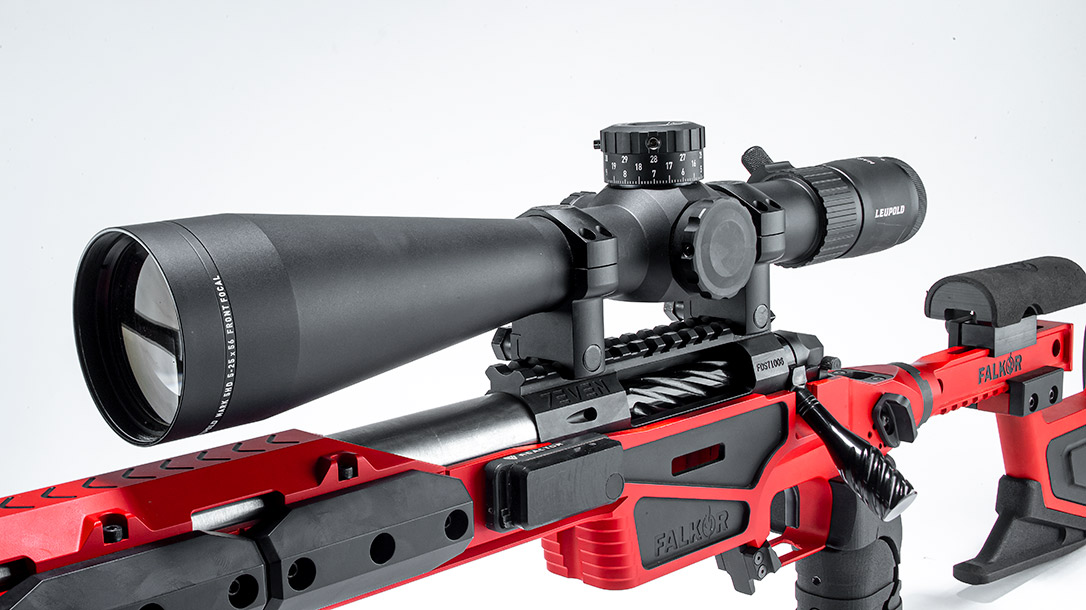Competition is fierce amongst the manufacturers within the precision shooting circle. Never before has the consumer been front and center to so much development and so many product releases. The floodgates of new options and accessories have been opened whether it’s chassis, bipods and, of course, optics. Check out this rundown of six top riflescopes sure to up your game.
6 Top Riflescopes Worth a Look
LEUPOLD
Leupold released the Mk5 HD roughly 3 years ago. And in an effort to bring an advantage to the shooter, they released a new reticle, the CCH. It’s a Christmas tree-type reticle featuring .25 Mil markers instead of the more common .20. It also featured moving target hold, but seemed pretty busy and received mixed reviews. Now they have the PR2.
The PR2 reticle is a clean reticle, still featuring the .25 Mil subtensions. The PR2 comes with quite a bit of open space at the center of the reticle with the first marker located .25 mil left or right. Having the .25 markers removes one-fifth of the markers, adding to a cleaner field of view. A small center dot is easy to see and place over targets without taking up too much real estate on them. It also features .1 Mil markers between the 3 and 4 Mil markers for finer measuring.
Advertisement — Continue Reading Below
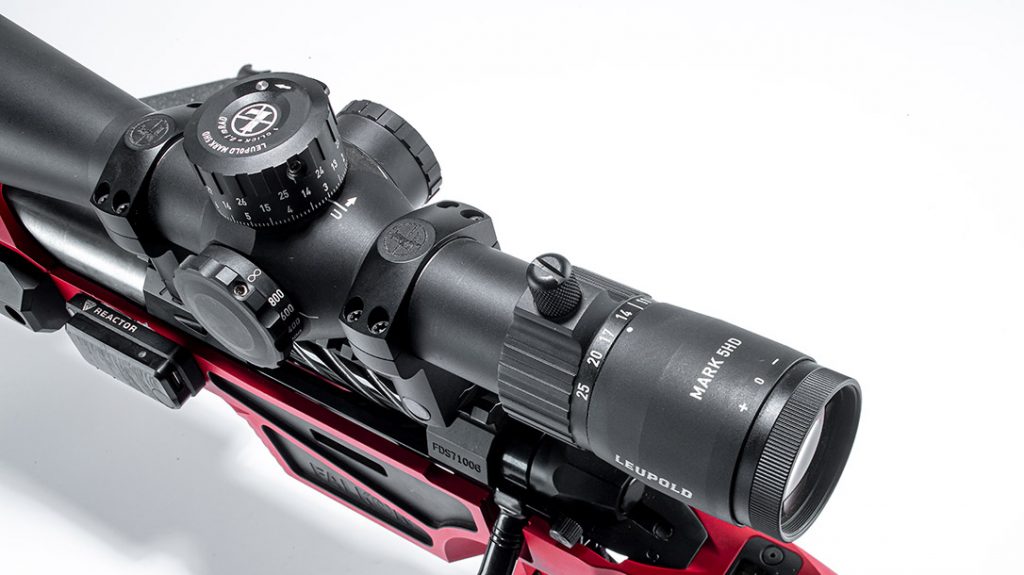
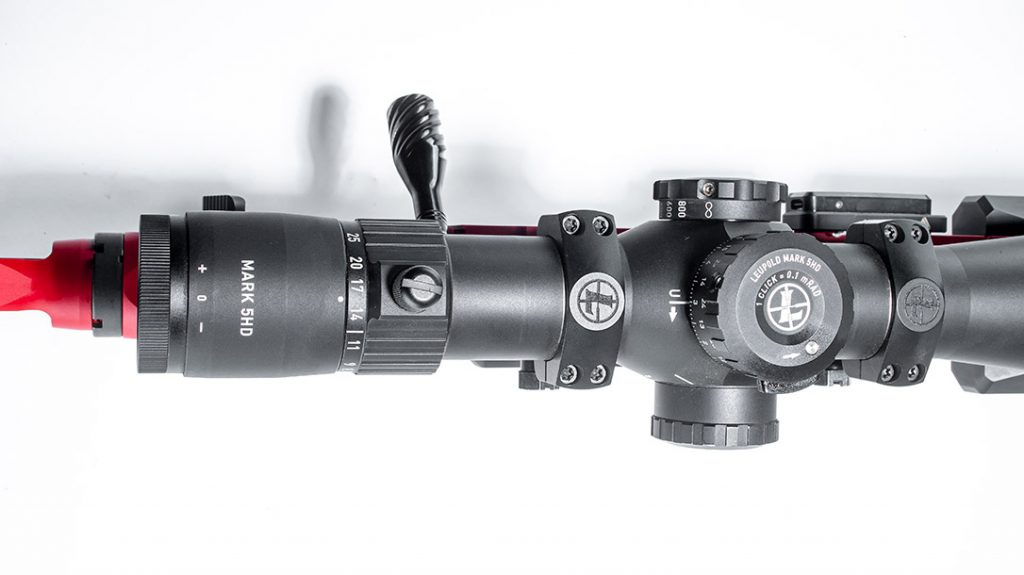
The MK5HD is light compared to competitive products to the tune of 20 ounces or more in some cases. It features a Zero Lock, for inadvertent turret movement prevention and return to zero. Of course it has excellent HD glass, is crystal clear and features 30 Mil of travel in three revolutions. Its 5:1 zoom ratio is a nice range, and it also has a throw lever with smooth movement. It’s also available in an MOA version.
Advertisement — Continue Reading Below
The MARK 5HD 5-25X56 M5C3 FFP PR2-MIL is competitively priced in our opinion. (MSRP: $1,999; leupold.com)
KAHLES
The Kahles K25i DLR (Dynamic Long Range) is another high-end, high-quality offering from the folks at Swarovski. The DLR is Kahles’ move to create a riflescope optimized for “dynamic long range” competitions.
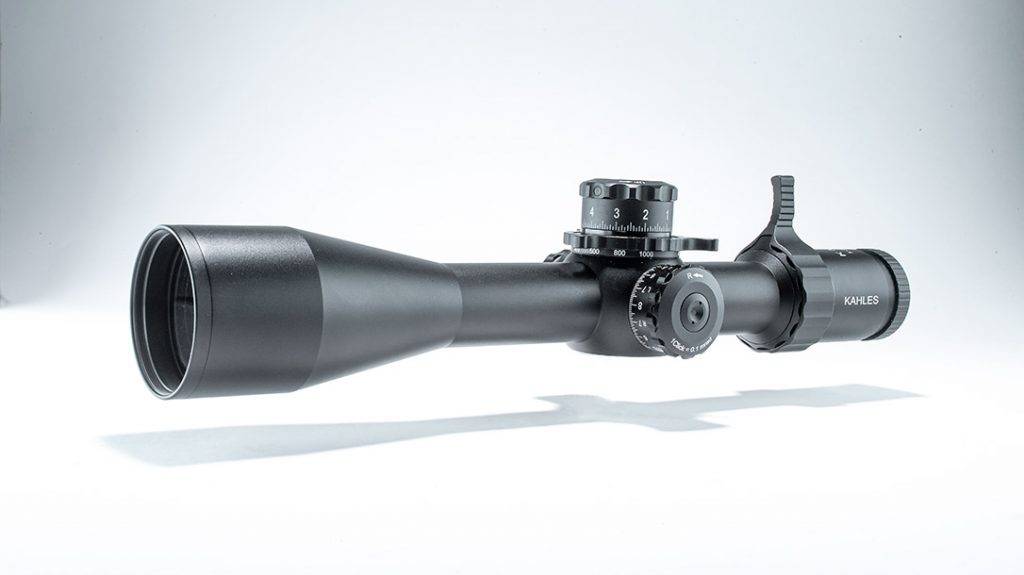
Advertisement — Continue Reading Below
It features an extra wide field of view—8 percent wider than the non DLR. It also features 10 Mil (100 clicks) per revolution as opposed to 16 Mil on the K25i. Big, easy-to-see/read turret markings help, along with large parallax knob and throw lever that make adjustments easy.
The windage turret can be had on the left or right side of the optic, and it features optional Twist Guard windage knob that prevents the knob from being turned inadvertently. Featuring a SKMR4 reticle, it is illuminated, as well. The first-focal- plane scope features a 34mm tube, and zero stop is included. (MSRP: $3,549; kahles.at/us)
VORTEX
This summer, Vortex released the Venom 5-25×56 FFP with many features at an attractive price point. The Venom features a 34mm tube, giving the turrets more room to move, is a first-focal-plane scope and has Vortex’s RevStop zero system. The parallax can be achieved down to 15 yards.
Advertisement — Continue Reading Below
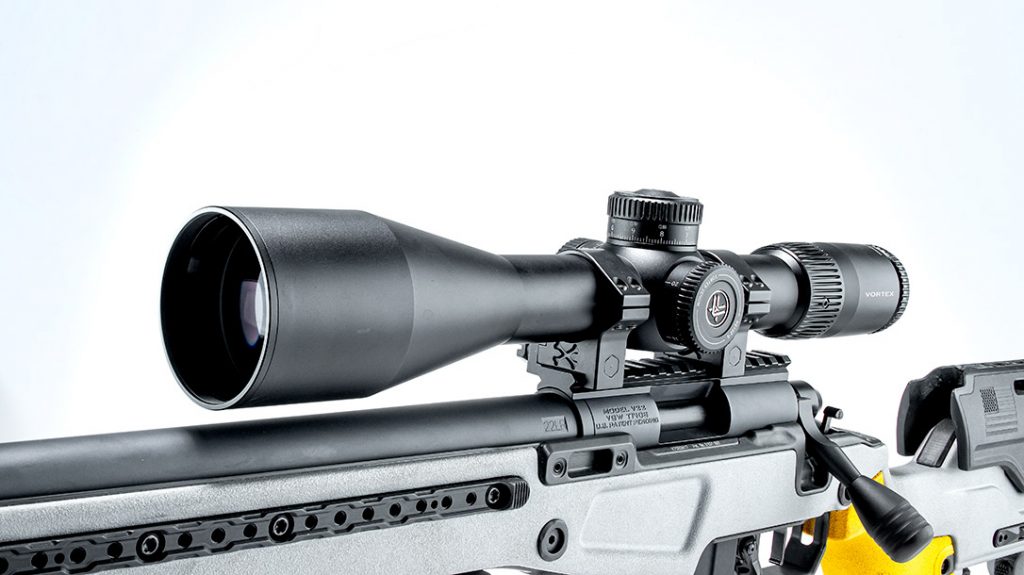
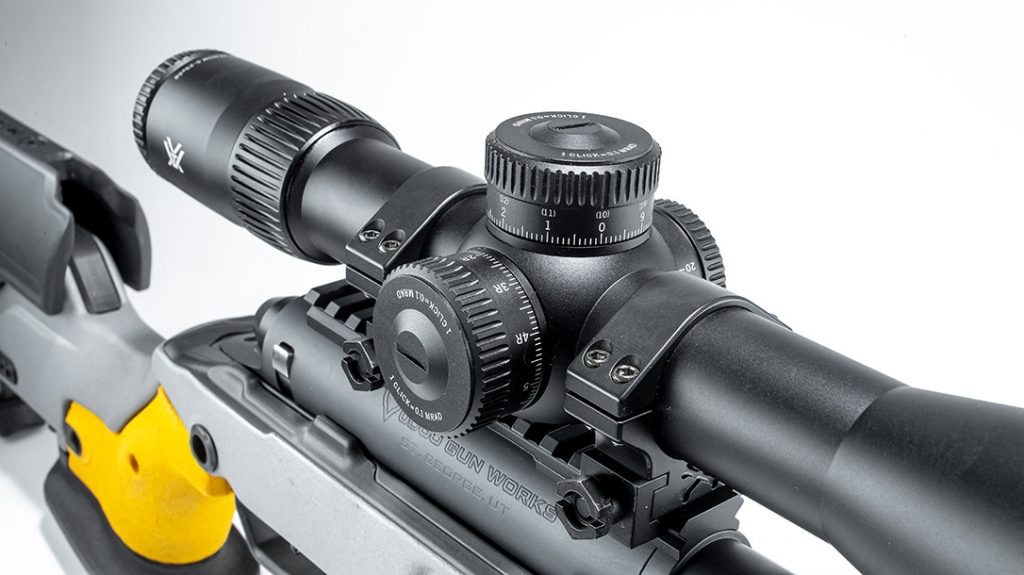
The glass etched reticle is available in the popular EBR-7C reticle that gives you the ability to hold accurately for wind and elevation when dialing isn’t an option or desirable. The picture is bright and crisp, thanks to XD (extra-low dispersion) glass. The body is a single-piece tube made from a solid piece of aircraft grade aluminum.
Advertisement — Continue Reading Below
The Venom appears to be a whole lot of optic for the money and is available in MRAD and MOA. (MSRP: $699; vortexoptics.com)
MAVEN
You might or might not have heard of Maven. Maven was started in 2013 in Cody, Wyoming, and is a company that delivers its optics directly to consumers to keep costs down for the end user. Though they are young, their goal is to provide the shooter with a quality optic that they can afford.
The RS.3 is a first-focal-plane, 50mm objective and 30mm tube optic. Magnification range is 5-30x. It’s available in MRAD and MOA versions and features ED glass. Like other optic models of these times, it also features multi-coated lenses.
Advertisement — Continue Reading Below
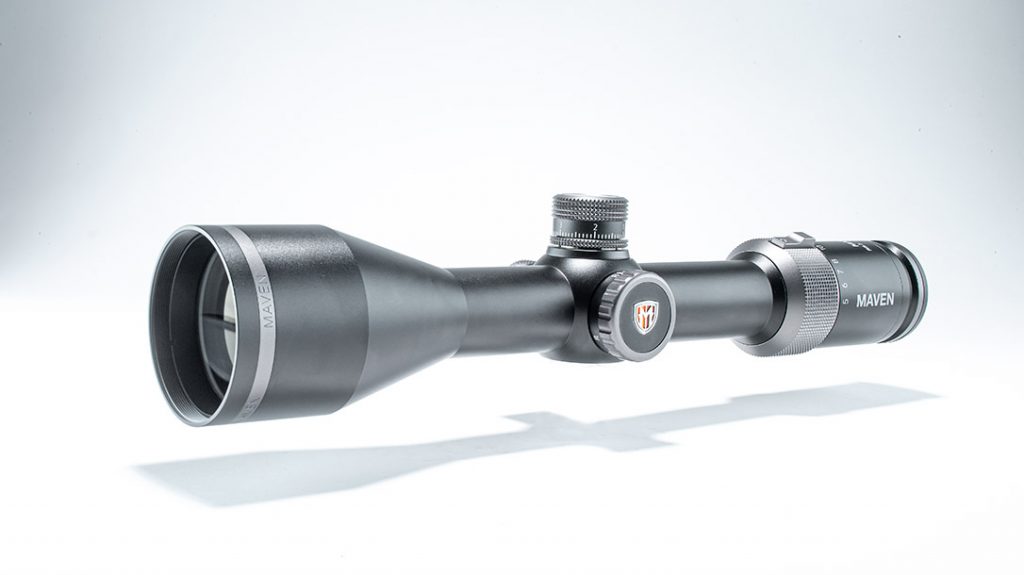
Fit and finish on the RS.3 is superb. Markings are clear and distinct, and it’s got some heft to it; whether that’s good or bad is up to you. The magnification ring moves smoothly with just the right amount of tension on it. It also has side parallax. While it is no sign of how good or bad the tracking is, the turret feedback is excellent both in feel and auditory terms. You can make adjustments and feel confident that you aren’t blowing by your inputs.
The RS.3 has three reticle offerings, and you can even have the accent colors custom anodized, with your name engraved if you wish. The RS.3 is targeted for hunting more than target shooting but it can still play the role. The RS.4 is their target model but wasn’t available at the time. It also features a lifetime warranty. (MSRP: $1,600; mavenbuilt.com)
Advertisement — Continue Reading Below
LEICA
Leica is one of those names that we relate to quality, refinement and sophistication. Last year, they introduced their PRS 5-30x56i and it seems to have gone mostly unnoticed. The PRS 5-30x56i was designed specifically for the long-range crowd with 32 Mils of travel in its multi-turn elevation turret, which can be zeroed without tools. The zero stop feature in the Leica can be deactivated or activated at will and as necessary.
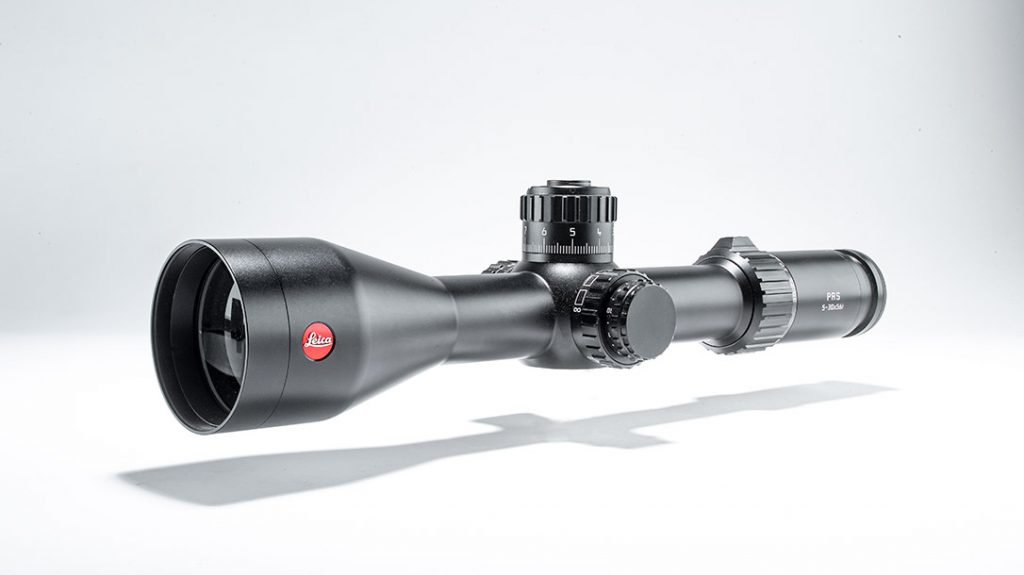
As you might imagine, the glass is up to snuff with excellent light transmission and clarity. It’s built tough, too, with superb fit and finish throughout. Three different reticles are available with us nodding toward the L-PRB with its grid-style layout, featuring .2-Mil markings and a crosshair thickness of 4 cm. Interestingly, there is an open center dot, where most other optics have a solid one. It measures 1 cm and makes zeroing a very precise ordeal. The top portion of the field of view is completely unobstructed save for one Mil of hashes on the elevation stadia.
Advertisement — Continue Reading Below
The Leica is built to last with all metal parts. (MSRP: $2,699; leicacamerausa.com)
PRIMARY ARMS
Primary Arms PLx 6-30x56mm FFP is a first-focal-plane optic that utilizes HD Japanese glass (like many others) for enhanced clarity. It works for medium- to long-range use and also features a 34mm tube and 56mm objective.
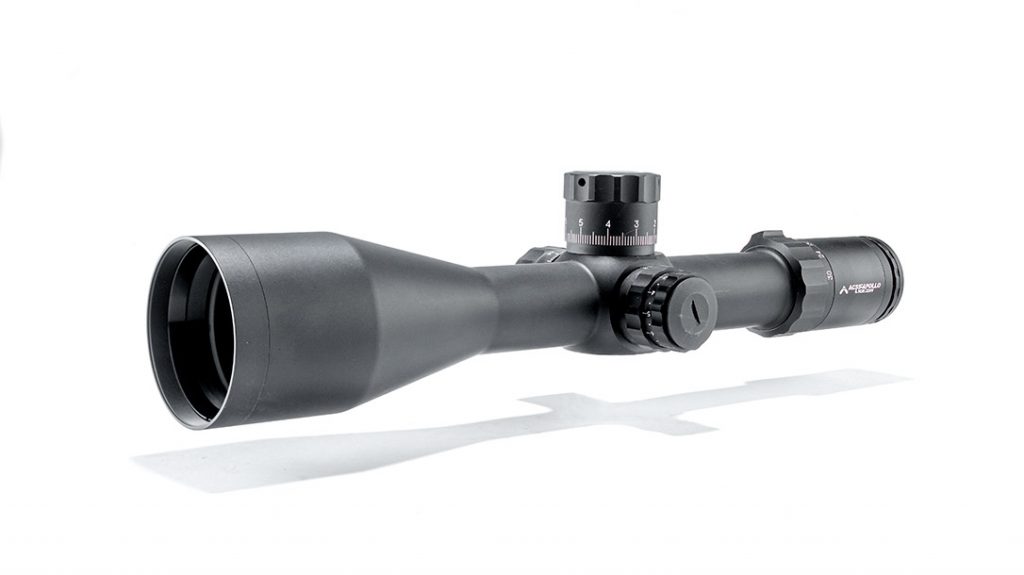
Turret adjustments are .1 Mil and are zero returnable, but it has no zero stop. The illuminated reticle is NV compatible. The ACSS Apollo 6.5CM/.224V reticle is calibrated for 6.5 Creedmoor and .224 Valkyrie ammo and features a lifetime warranty. The center aiming point is a chevron instead of the dot that many other optics use.
If you’re running a 6.5 Creedmoor (or .224 Valkyrie) the Primary Arms may be a good option for you. The instruction manual includes all the information on the reticle and optimized conditions for the ballistics to match up. (MSRP: $1,500; primaryarms.com)
This article originally appeared in the Ballistic Magazine Aug/Sept 2021 issue. Subscription is available in print and digital editions at OutdoorGroupStore.com. Or call 1-800-284-5668, or email subscriptions@athlonmediagroup.com.
